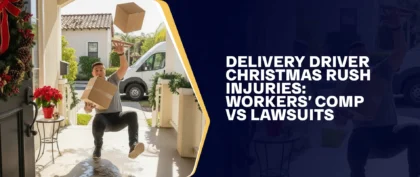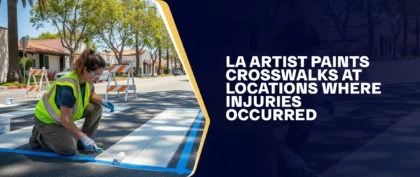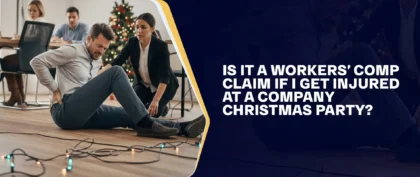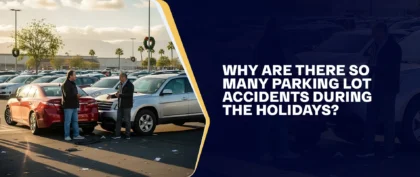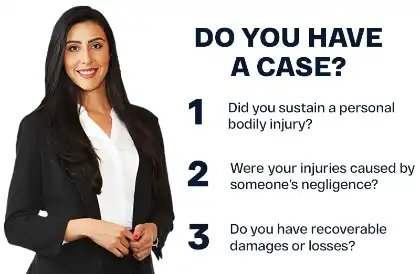Table of Contents
Everyone Is A Pedestrian
Pedestrians are among the most vulnerable road users on California’s roadways. Unlike vehicle occupants, they do not have the protection of a steel vehicle frame to protect them from the force of a collision. They do not have life-saving equipment, such as seatbelts and airbags. They do not even have the padding and helmets that provide protection for bicyclists.
The California Office of Traffic Safety reports that 893 pedestrians were killed in California in 2018, a 26 percent increase from 2014. This figure represents a pedestrian fatality rate that is 25 percent higher than the national average. No state had more pedestrian deaths than California in 2018.
More than 14,000 pedestrians were also injured here in 2018. These injuries have resulted in significant medical bills, lost wages, pain and suffering, property damage, and other losses for victims.
If you have been injured by a negligent driver while walking, you may have grounds to seek compensation for your losses. Over the years, our California pedestrian accident attorneys have represented injured clients throughout the state, helping them negotiate settlement offers and present cases to courts if necessary. You can schedule a free initial consultation with Arash Law to learn if we can do the same for you after a pedestrian accident.
Pedestrian Accident Statistics
According to the Centers for Disease Control and Prevention (CDC), over 8,000 pedestrians were killed on U.S. roads in 2022. That’s about one death every 64 minutes. Additionally, recent data shows pedestrian deaths have increased significantly in recent years. Here are some risk factors that increase a pedestrian’s chances of being injured in an auto accident:
- Alcohol impairment. About one in three pedestrians injured in accidents in 2017 had a blood alcohol concentration (BAC) of 0.08 or higher.
- Age (pedestrians aged 65 and older are more likely to be injured in car accidents).
- Speeding vehicles.
- Walking in an urban area.
- Crossing the street outside of a designated intersection.
- Walking at night.
Safety Tips
To stay safe, all road users must accept individual responsibility for engaging in safe behaviors. Here are some tips for avoiding accidents as a pedestrian or driver:
Safety Tips For Pedestrians
- Be predictable. Follow the rules of the road and obey signs and signals. If drivers cannot anticipate your movements, it can be more difficult for them to avoid hitting you.
- Whenever possible, cross streets at crosswalks or intersections, as this is where drivers expect pedestrians to be. Look for cars in all directions, including those turning left or right.
- If a crosswalk or intersection is not available, locate a well-lit area with the best view of oncoming traffic. Wait for a gap in traffic that allows enough time to cross safely. Continue watching for traffic as you cross the intersection.
- Walk on sidewalks whenever they are available. If there is no sidewalk, walk facing traffic and as far from traffic as possible.
- Keep alert at all times. Don’t be distracted by electronic devices that take your eyes (and ears) off the road.
- Never assume a driver sees you. Make eye contact with drivers as they approach to ensure they can see you.
- Be visible at all times. Wear bright clothing during the day and consider using reflective materials or carrying a flashlight at night to increase visibility.
- Watch for cars entering or exiting driveways, or backing up in parking lots. These tasks divert a driver’s attention and can make it more difficult for them to see pedestrians.
- Avoid alcohol and drugs when walking. They impair your abilities and judgment and have been proven to increase the likelihood of pedestrians being injured in accidents.
Safety Tips For Crossing The Street
- Stop at the curb (or the edge of the road if there is no curb).
- Stop and look left. Look right, then left again, before stepping into the street.
- If you see a car, wait until it goes by. Then look left, right, left again until no cars are coming.
- If a vehicle is parked where you are crossing, look to make sure there is no driver and that the car is not running.
- Next, go to the edge of the car and look left-right-left to see if cars are coming.
- When there are no cars coming, it is safe to cross the road. Keep looking left-right-left for cars while you are crossing.
Safety Tips For Children
Although adults are more likely to be injured in pedestrian accidents than children, the latter usually have less experience with the rules of the road. Parents can teach children to be aware of their surroundings. Among other things, this means:
- Not using electronic devices while walking. If the child does need to text, he or she should move out of the way of others and stop on the sidewalk.
- Not walking with headphones on or earbuds in.
- Looking left, right, then left again before crossing the street.
- Staying where drivers expect a pedestrian to be. It is advisable to walk on the sidewalk and cross only at crosswalks.
- Not making unexpected movements. Children can be impulsive and may sometimes dart out into the road unexpectedly. Teach your children the importance of being where drivers expect pedestrians to be.
Safety Tips For Teen Pedestrians
Safe Kids reports that half of the teens it surveyed admitted to crossing the street while distracted by a mobile device. The site also reveals concerning statistics about teen pedestrian safety in the United States. These facts demonstrate the importance of teaching your teens safe pedestrian behaviors. Here are some important reminders for teen pedestrians:
- Refrain from using a mobile device while walking. Stop on the edge of the sidewalk to finish texts, emails, or posts before you continue walking.
- Be especially careful when walking around busy school parking lots. Traffic is very hectic here, and it can be difficult for drivers to see you.
- Be cautious around new, inexperienced teen drivers. A high school parking lot is a busy jumble of traffic. The inexperience of these young drivers may increase the likelihood that they will cause accidents. Use extra caution and leave plenty of space for cars when walking near high schools, teen centers, and other places where young drivers will be gathered.
- Be sure drivers can anticipate your movements. Do not cross the street outside of designated intersections or crosswalks. Walk on the sidewalk. Do not jump out into traffic unexpectedly.
Safety Tips For Drivers
Drivers have a special duty of care when it comes to pedestrians. Pedestrians have no way to protect themselves from a possibly fatal collision with a vehicle, whereas a driver is expected to maintain control of the vehicle at all times. Drivers who fail to drive in a reasonably prudent way may be found negligent.
Negligent drivers could have a legal obligation to compensate injured victims for all losses incurred as a result of their negligence.
To stay safe and avoid liability, drivers must remain alert and cautious at all times. Here are some safety tips to help drivers avoid pedestrian accidents:
- Look out for pedestrians everywhere, at all times. Safety is a shared responsibility. Drivers have even greater responsibilities than pedestrians because they are operating a potentially dangerous vehicle.
- Use extra caution when backing up. Take your time to check for any pedestrians behind you.
- Use extra caution at night, during inclement weather, and in other conditions that make it difficult to see.
- Slow down! The more time you have to see a pedestrian, the better options you will have for avoiding a collision.
- Slow down and use extra caution in work zones and school zones. These areas have a lot of pedestrians going in many different directions. It can be difficult to know where all these pedestrians are headed, so it is important to go very slowly and allow yourself plenty of space.
- Yield to pedestrians in crosswalks. Make eye contact to indicate that you see them. Stop well back from the crosswalk to give other vehicles an opportunity to see the crossing pedestrians so they can stop too.
- Don’t pass vehicles stopped at crosswalks or speed around a slow vehicle in a lane of traffic. You might not be able to see the pedestrians they stopped for.
- Don’t allow yourself to become distracted by eating, mobile devices, navigation systems, or built-in entertainment systems. Taking your eyes off the road for even a second may have fatal consequences.
- Don’t drive under the influence of drugs or alcohol. These substances can impair your ability to drive and potentially risk a fatal accident.
- Slow down and be prepared to stop when turning or entering a crosswalk.
Safety Tips For Teen Drivers
According to the CDC, motor vehicle accidents are the leading cause of death for teens in the United States. 2017 saw an average of one death every four hours among teens aged 16-19. Males, teens driving with passengers, and newly licensed drivers are at the greatest risk for being involved in motor vehicle accidents. Parents can reduce these risks by understanding specific risk factors and addressing them with their teen drivers.
Many young teen drivers intend to drive safely, but road conditions may sometimes get the better of them. Traffic, weather, and even friends in the car can increase the likelihood of a teen being involved in a car accident. With little driving experience to work with, teens are not always prepared to avoid collisions. The Insurance Information Institute recommends that parents of teen drivers take the following safety measures:
- Choose a safe vehicle, avoiding those with a high tipping point that are easy to roll (such as SUVs) and flashy models that might encourage dangerous driving behaviors (such as convertibles and sports cars).
- Enroll your teen in a driver’s education course.
- Check with your insurance company to see if they offer safe driving discounts or programs for teen drivers.
- Teens are typically limited to driving during the day and without passengers by Graduated Driver’s Licensing programs because these have been proven to reduce the risk of accidents. Even if your teen is driving in a state without such restrictions, parents can similarly consider enacting these safety precautions.
- Discuss the dangers of drug and alcohol use while driving.
- Ban all mobile device use while the vehicle is in motion. If your teen needs to make a call or send a text, the vehicle should be safely stopped out of the path of oncoming traffic.
- Set a good example for your teen by modeling your own responsible driving behaviors. Wear your seatbelt, slow down, avoid distractions, and avoid engaging in reckless driving.
Driver Safety In School Zones
School zones are among the most hazardous areas on the road. There are many drivers, pedestrians, and bicyclists trying to move in various directions simultaneously. There are large buses whose drivers are likely to have limited visibility of the surrounding area.
In high schools, many inexperienced drivers may not know how to deal with traffic and avoid collisions. All of these circumstances can potentially be deadly for pedestrians in and around school zones.
The National Safety Council has issued important safety tips for drivers in school zones:
- Don’t double park; it blocks visibility for other children and vehicles.
- Don’t load or unload children across the street from the school.
- Carpooling can help reduce the number of vehicles at the school.
- Don’t block the crosswalk when stopped at a red light or waiting to make a turn, forcing pedestrians to go around you; this could put them in the path of moving traffic.
- In a school zone, when flashers are blinking, stop and yield to pedestrians crossing the crosswalk or intersection.
- Stop for a school patrol officer or crossing guard holding up a stop sign.
- Take extra care to look out for children in school zones, near playgrounds and parks, and in all residential areas.
- Don’t honk or rev your engine to scare a pedestrian, even if you have the right of way.
- Don’t pass a vehicle stopped for pedestrians.
- Use extreme caution to avoid striking pedestrians wherever they may be, no matter who has the right of way.
- Don’t pass a bus from behind, or from either direction if you’re on an undivided road, if it is stopped to load or unload children.
- If the yellow or red lights are flashing and the stop arm is extended, traffic must stop.
- The area 10 feet around a school bus is the most dangerous for children; stop far enough back to allow them space to enter and exit the bus safely.
- Be alert; children are often unpredictable and tend to ignore hazards and take risks.
- When passing a bicyclist, proceed in the same direction slowly, and leave 3 feet between your car and the cyclist.
- When turning left and a bicyclist is approaching in the opposite direction, wait for the rider to pass.
- If you’re turning right and a bicyclist is approaching from behind on the right, let the rider go through the intersection first, and use your turn signals.
- Watch out for bike riders turning in front of you without looking or signaling.
- Be extra vigilant in school zones and residential neighborhoods.
- Watch for bikes coming from driveways or behind parked cars.
- Check your side mirrors before opening your door.
Schedule A Free Initial Consultation With A California Pedestrian Accident Attorney
Arash Law’s personal injury lawyers in California have years of experience handling pedestrian accident claims. We have helped injured clients across California, including those from San Francisco, Riverside, San Jose, San Diego, Sacramento, and Sherman Oaks. We can help explain your legal rights and guide you in understanding the various sources of compensation from potential defendants.
Call (888) 488-1391 or contact us online to schedule your free initial consultation with an experienced California lawyer for injured pedestrians. We also have skilled car accident lawyers, motorcycle accident lawyers, truck accident attorneys, and injury lawyers who can help with workplace accident claims, dog bites, slip-and-fall accidents, and others.




